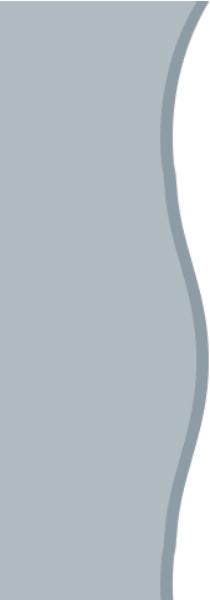

| Last modified 06/2019 |
Crustal types and crustal reworking
THE LITHOSPHERE
| The site is being updated irregularly |
Number of page visits
|
| Professor Irina M. Artemieva Geology Section, IGN University of Copenhagen Øster Voldgade 10 Copenhagen DK-1350 Denmark Email: iartemieva@gmail.com |
| Artemieva I.M. & Shulgin A., 2019. Making and altering the crust: A global perspective on crustal structure and evolution. EPSL, 512, 8-16. |
| A global perspective on crustal structure and evolution |
Crustal structure preserves a unique record of physical and chemical conditions of its formation and later
modification by geodynamic processes. The existence of broad global correlations between crustal structure
and tectonic settings led to models of crustal typization by 1D crustal columns based on absolute thicknesses
of crustal layers and the Moho depth.
Here we propose a fundamentally different approach to typify the crust and geodynamic models of crustal
evolution. We demonstrate that the relative ratio of the thicknesses of three principal crustal layers
(sedimentary/felsic-intermediate/mafic in continents and Layer1/Layer2/Layer3 in oceans) is a fundamental
characteristic of the crust. The relative ratio uniquely specifies the crustal structure in different tectonic
settings and is independent of the absolute values of thickness of the crustal layers and the Moho depth.
We analyze this new fundamental characteristic of the crust by ternary diagrams based on seismic models for
continental and oceanic crustal structure in the northern Eurasia – northern Atlantics region and for selected
oceanic provinces of different geodynamic origin, where seismic models for the crust are available.
We present global and regional trends of crustal evolution and, as a practical application of the new approach,
calculate average crustal densities in different continental and oceanic tectonic settings.
modification by geodynamic processes. The existence of broad global correlations between crustal structure
and tectonic settings led to models of crustal typization by 1D crustal columns based on absolute thicknesses
of crustal layers and the Moho depth.
Here we propose a fundamentally different approach to typify the crust and geodynamic models of crustal
evolution. We demonstrate that the relative ratio of the thicknesses of three principal crustal layers
(sedimentary/felsic-intermediate/mafic in continents and Layer1/Layer2/Layer3 in oceans) is a fundamental
characteristic of the crust. The relative ratio uniquely specifies the crustal structure in different tectonic
settings and is independent of the absolute values of thickness of the crustal layers and the Moho depth.
We analyze this new fundamental characteristic of the crust by ternary diagrams based on seismic models for
continental and oceanic crustal structure in the northern Eurasia – northern Atlantics region and for selected
oceanic provinces of different geodynamic origin, where seismic models for the crust are available.
We present global and regional trends of crustal evolution and, as a practical application of the new approach,
calculate average crustal densities in different continental and oceanic tectonic settings.
Ternary diagram for relative thicknesses of three major
crustal layers in continental and oceanic crustal provinces:
(1) sedimentary cover (or Layer1),
(2) upper-middle crust of felsic-intermediate composition (or
Layer2 for oceanic crust),
(3) lower and high-Vp lowermost crust of mafic composition
(Layer 3 for oceanic crust).
crustal layers in continental and oceanic crustal provinces:
(1) sedimentary cover (or Layer1),
(2) upper-middle crust of felsic-intermediate composition (or
Layer2 for oceanic crust),
(3) lower and high-Vp lowermost crust of mafic composition
(Layer 3 for oceanic crust).

Cross-plots for relative thickness of three major crustal layers in different
tectonic provinces worldwide.
The two-letter name abbreviation for tectonic provinces is explained in Table
S1. Color code is the same as in Figs.1, 2.
A strong correlation between relative thicknesses of the felsic-intermediate
and mafic layers indicates that both layers are affected by major processes
of crustal formation and modification.
tectonic provinces worldwide.
The two-letter name abbreviation for tectonic provinces is explained in Table
S1. Color code is the same as in Figs.1, 2.
A strong correlation between relative thicknesses of the felsic-intermediate
and mafic layers indicates that both layers are affected by major processes
of crustal formation and modification.
Typical values of average density of oceanic and
continental crust in different tectonic settings.
Color code for crustal provinces is the same as in Figs.1, 2, 4.
Bulk crustal densities are calculated by assuming typical densities
for three crustal layers:
2500 kg/m3for sediments/Layer 1;
2750 kg/m3for the upper-middle crust/Layer 2, and
3000 kg/m3for the lower and high-Vp lowermost crust/Layer 3.
continental crust in different tectonic settings.
Color code for crustal provinces is the same as in Figs.1, 2, 4.
Bulk crustal densities are calculated by assuming typical densities
for three crustal layers:
2500 kg/m3for sediments/Layer 1;
2750 kg/m3for the upper-middle crust/Layer 2, and
3000 kg/m3for the lower and high-Vp lowermost crust/Layer 3.


